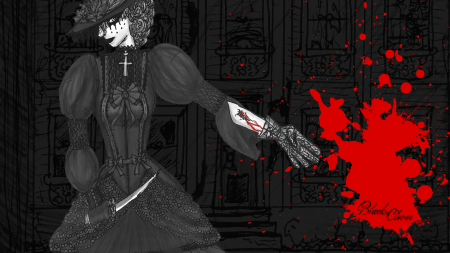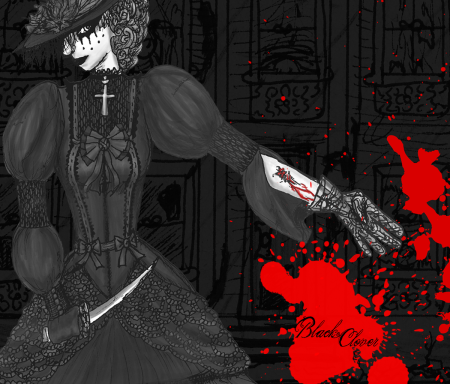
So after making a bold tweet one morning, it seems I confused a few of my Twitter followers. I made the daring proclamation that the Sailor Moon RPG wasn’t, in fact, the worst game I’ve ever played. Instead, I took it one step further and actually listed it amongst my favorite RPGs.
Why would I say something so nuts? Well, to be honest, I was being a little sarcastic. Perhaps this is not literally the best RPG I’ve ever played, but this game is certainly more solid than one would be lead to believe. Licensed products are always hit and miss, as they can tend to be shells of rules that are just pushed out the door to capitalize on the fan base’s love for the product. There are exceptions, of course, and this game is certainly one of them.
Why do I have such nice things to say about a game based on a sometimes hollow messaged kids’ show/anime? Here’s my list.
1. The game’s rules don’t suck
The Sailor Moon RPG is actually a lighter form of the anime-inspired rules set named Big Eyes, Small Mouth. BESM, as it’s known in acronym form, is a very freeform set of rules that can be used to mimic any anime setting. But, while BESM is a little generic and sometimes overwhelming, SMRPG actually takes the initiative and cuts down on BESM’s clutter.
The skill system in BESM, which I always felt was a little tacked on, has been removed in favor of standardized statistic checks (also featured in BESM, but always modified by skills.) These checks are made by using a single piece of their tri-stat system (which measure’s a character’s Body, Mind, and Soul from 1 to 12) or the average of two or all three stats for checks that may involve multiple stats (like pushing a block and solving a puzzle simultaneously.) Players must roll below their stat or average stat on two d6, a common die that almost everyone owns at least one of. The game also includes degrees of success, so a character who has a stat of 5 and rolls a 3 did better than a character who has a stat of 4 and rolled a 3. Both characters succeeded in their task, but the player who rolled lower than their target value did better at it. The same holds true for failure (so GMs can be inventive with their descriptions of the character’s actions.)
When it comes to dealing damage, SMRPG and BESM do the same thing — they rely on your pre-made weapon attacks (or Senshi/Knight attacks in this) to deal tons of damage. No dice are rolled for damage steps, as the attacks themselves have an inherent damage value that will always be applied when the defender is hit. If, for some odd reason, you’re punching or using a weapon, damage is simply your combat value (the number you have to roll lower than to hit) multiplied. Damage from a punch is simply your combat value in damage points. Damage from a non-magical weapon is that multiplied by two. This makes dealing damage easy to figure out and calculate in the heat of battle. (If you’re asking why non-magical weapons deal so little damage, it’s because the game’s focus isn’t on them. How often are there guns in Sailor Moon? It’s a setting rule that I approve of, as it keeps to the spirit of the show.)
Finally, characters are built by using attributes. Attributes are traits or features that are added to a character during character creation. These traits define what the character is all about. For example, taking the “Massive Damage” attribute lets your character naturally deal more damage in combat each time you take it. Attributes are ranked from 1 to 6, becoming more powerful as they rank up, but they will also cost more character creation points.
Long description short, these rules are easy to use, fast to play with, and still provide a good amount of detail for both the players and the GM. Min/maxers have the option to uniquely customize attributes, or even take the “Unique Attribute” option to create their own attributes. On the other side of the coin, new players can be set up very quickly, and their rules will not overwhelm them the first time they sit at the table. It’s a perfect split for both play-types.
2. The game stays true to the universe
The point of a licensed game is to re-create your favorite universe, right? Well, the SMRPG does that too. While the BESM rules have been cut down, the book made sure to keep the most relevant rules to the universe intact and even went so far as to add special attributes and rules that are unique to the universe. We’ve already mentioned the “guns kinda do crappy damage” rule, because the SM universe isn’t about guns and armor. Pulling a gun on a Sailor Scout, a magical force of nature, is stupid. While they may not outwardly wear armor (and some people may rage over their sailor uniforms) there is a magical force that is protecting them and changing them when they are transformed. Ya can’t just write that off.
Other rules include special attributes for anyone who plays a Senshi/Knight character AND special attributes for players or the GM when they create Dark Warrior characters. Yes, that’s right, you can pull out some Negaverse traits. It’s not all happy kitties and rainbow attacks in this book, and I’ll get to that more in a future point.
3. The game is a idiot’s guide to Sailor Moon
I’m going to make another bold statement here — I’ve barely watched Sailor Moon. Barely barely. I know major characters, the general plotline, and that’s it. I am no expert on this universe at all.
Yet, the book understands that people like me exist. It’s the kind, knowledgable friend who will tell you whatever you want to know about the license’s universe in an organized way.
The game starts out by giving you the statistics for all of the major characters, and I mean ALL OF THEM. It doesn’t pull its punches and give you only the “main ones.” It goes into all of the major villains, the entire cast of Senshi (and the single Knight, Tuxedo Mask/Prince Darien, and yes I’m counting Uranus, Neptune, Pluto, and Saturn), the Sailor Starlights, Queen Beryl, her cast of bad guys, Alan and Ann, the entire Darkmoon Family, Wiseman, Rini, Rini’s adult form of Black Lady, and… and… phew… Ok, it’s comprehensive, to say the least. The write-ups even give you a full synopsis of what they did on the show.
Then the book gives you a write up of Tokyo, a few maps, and then a listing of major locations from the show. That way you can call identifiable places and get an idea of where people are travelling. After that is a FREAKING TIMELINE OF HISTORY that denotes when every major event takes place and shows you when exactly all of those episodes happened. Then, after that, the book goes far enough to run down the first 82 episodes of Sailor Moon with plot synopses. Intense is a good word for this section.
But, for those who really want to run a serious game, this information is super handy. You get a perfectly clear picture of what happens and when it happens.
4. The game doesn’t hamstring the players
This is a critical one for me. The game’s rules not only allow players to make their own unique character with attributes and defects, but it also lets them go beyond the “I’m a Sailor Scout, yay” mentality. Did you want to play a completely evil campaign where all of the players serve Queen Beryl? You can do that. You want to play a one shot where everyone plays the Yoma who attack the Sailor Scouts? You can do that. You want to play a guy who turns into a female Sailor Scout when they transform? You can… amazingly enough… do that. (The Sailor Starlights actually started that whole thing, so it’s canonical. >.> Might as well insert a case where a woman can turn into a male Knight during their transformation as well. :D)
5. The game doesn’t short change the setting
Finally, the game doesn’t just go, “Oh, here’s Tokyo, have fun.” It doesn’t limit the players to the confines of the primary setting of the show. In fact, it does what it can to find the loose ends in the universe and offer more insight into how GMs can create really unique campaigns that go beyond the show.
For example, the Negaverse, Crystal Tokyo, the Old Moon Kingdom (lulz, The Old Republic…) and other places are detailed as possible campaign settings. The book offers the GM what information it can on these areas, and then begins to propose hypothetical questions to get the GM’s imagination running. What’s 30th Century Crystal Tokyo like? What trials and tribulations could your unique characters find there as they interact with the main cast? What’s the culture of the Negaverse like? Is it a mirror image of Earth? Do all of its inhabitants support Queen Beryl’s relentless war on the Sailor Scouts?
This allows you, the players, the ability to not only re-create the events of the show, but move beyond it. The setting is not only supported, but it is infinitely expanded to support your adventures. That’s cool shit.
So there you have it. Five long reasons as to why this game kicks ass at what it does. It’s a simple, approachable system that can be used by both novices and experts to both re-create and move beyond the events of the show. And, not only does it do that, it completely supports/encourages your own custom characters. Plus, the book itself is a great resource on the show’s events and multiple settings.
This is a licensed RPG that not only lives up to its namesake, but moves beyond it in some ways. That’s a good game.



